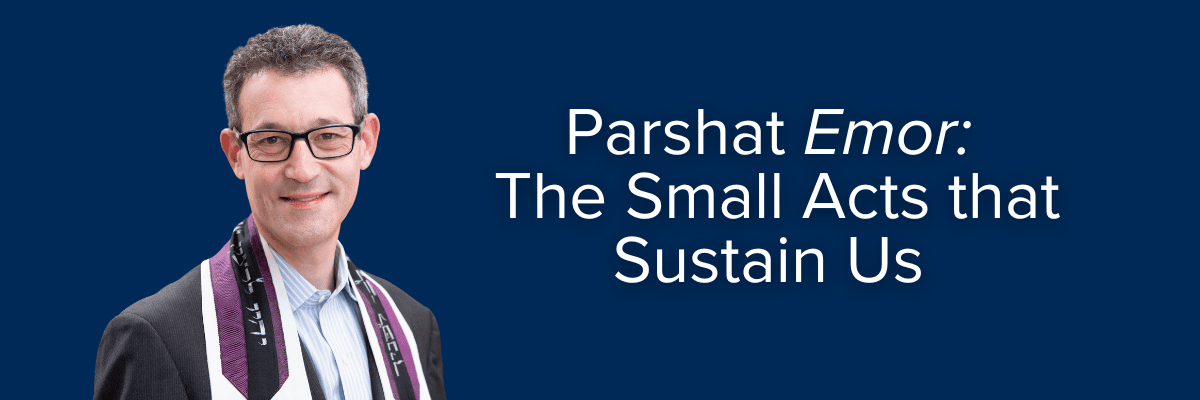Parshat Emor contains, among other things, instructions specific to the priests. One of the lasting images in this portion is of several lamps that sat inside the Tabernacle, just outside the Holy of Holies where only the High Priests could go. Today, these lamps are symbolized by a single lamp above the ark in every synagogue’s sanctuary, called the Ner Tamid, or Eternal Light.
The priests were commanded “L’ha’alot ner tamid,” which means, “to kindle lamps regularly.” The lamps were not always burning; they were to be lit every evening, only to burn until morning. Because lighting these lamps was also said to be “a law for all time through the generations,” this came to be known as the Eternal Light, symbolizing something different: a lamp that stays lit forever. This subtle nuance of whether a light is constantly on, or is regularly being kindled, teaches us about what it takes to ensure that anything — whether a light, a tradition, or a memory – is always with us. In Modern Hebrew, Tamid means “always” in both senses of the word: sometimes it means forever, and sometimes it means frequently or all the time.
As I observe shloshim, the first 30 days of grieving for my mother, I have felt deeply the ways that these two meanings are intertwined. The way a memory becomes lasting is by being called to mind over and over in different ways, thinking of her when I when I look at a picture, recall a memory, hear a song we would sing together, or even clean the kitchen in our home, because that was something we shared together.
When we are in mourning, even when we go about our regular days thinking about other things, little thoughts and memories bring our loved one to mind over and over. At the same time, there are also eternal memories. I think of the things my mother stood for in her life. She was especially devoted to building bridges between groups of people who were too often divided, whether along religious, ethnic or national lines or on a personal level.
The light of my spirit has also been buoyed by support from this congregation. I am grateful to the many people who have offered support to me, reminding me how important acts of caring are in our community and how it is through many small and frequent deeds, like the kindling and rekindling of a lamp, that we are sustained through difficult times.
The Ner Tamid is a symbol of the many acts, big and small, that are required to sustain a community “always,” through all of its hard moments. May we each do our part, and may every one of us benefit, from the support of a sacred community.
Wishing you a Shabbat Shalom
Rabbi Jeff Saxe


